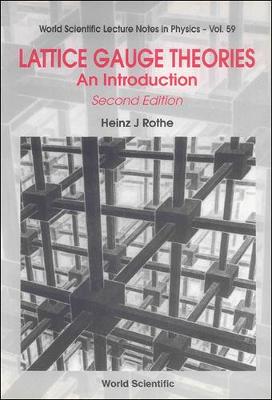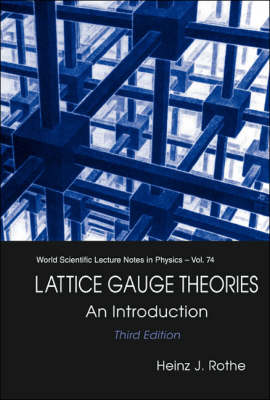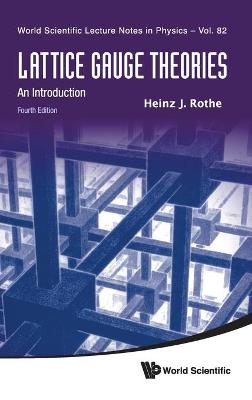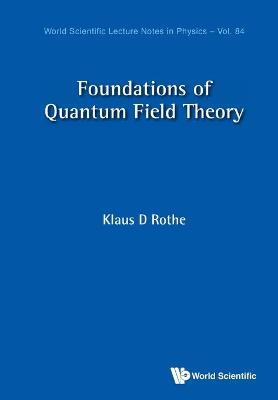World Scientific Lecture Notes In Physics
5 primary works
Book 59
This book introduces the reader to an area of elementary particle physics which has been the subject of intensive research in the past two decades. It provides graduate students with the basic theoretical background on quantum gauge field theories formulated on a space-time lattice, and with the computational tools for carrying out research in this field. The book is a substantially extended version of the first edition which appeared in 1992. Much effort has been invested to present the material in a transparent way, and in exemplifying subtle points in simple models. The material covered should enable the reader to follow the vast literature on the subject without too much difficulties. Hopefully the book will motivate young physicists to carry out research in this area of elementary particle physics.
Book 74
This book provides a broad introduction to gauge field theories formulated on a space-time lattice, and in particular of QCD. It serves as a textbook for advanced graduate students, and also provides the reader with the necessary analytical and numerical techniques to carry out research on his own. Although the analytic calculations are sometimes quite demanding and go beyond an introduction, they are discussed in sufficient detail, so that the reader can fill in the missing steps. The book also introduces the reader to interesting problems which are currently under intensive investigation. Whenever possible, the main ideas are exemplified in simple models, before extending them to realistic theories. Special emphasis is placed on numerical results obtained from pioneering work. These are displayed in numerous figures.
Book 81
Classical And Quantum Dynamics Of Constrained Hamiltonian Systems
by Heinz J Rothe and Klaus D Rothe
Published 1 January 2010
This book is an introduction to the field of constrained Hamiltonian systems and their quantization, a topic which is of central interest to theoretical physicists who wish to obtain a deeper understanding of the quantization of gauge theories, such as describing the fundamental interactions in nature. Beginning with the early work of Dirac, the book covers the main developments in the field up to more recent topics, such as the field-antifield formalism of Batalin and Vilkovisky, including a short discussion of how gauge anomalies may be incorporated into this formalism. All topics are well illustrated with examples emphasizing points of central interest. The book should enable graduate students to follow the literature on this subject without much problems, and to perform research in this field.
Book 82
This book provides a broad introduction to gauge field theories formulated on a space-time lattice, and in particular of QCD. It serves as a textbook for advanced graduate students, and also provides the reader with the necessary analytical and numerical techniques to carry out research on his own. Although the analytic calculations are sometimes quite demanding and go beyond an introduction, they are discussed in sufficient detail, so that the reader can fill in the missing steps. The book also introduces the reader to interesting problems which are currently under intensive investigation. Whenever possible, the main ideas are exemplified in simple models, before extending them to realistic theories. Special emphasis is placed on numerical results obtained from pioneering work. These are displayed in a great number of figures. Beyond the necessary amendments and slight extensions of some sections in the third edition, the fourth edition includes an expanded section on Calorons — a subject which has been under intensive investigation during the last twelve years.
Book 84
Based on a two-semester course held at the University of Heidelberg, Germany, this book provides an adequate resource for the lecturer and the student. The contents are primarily aimed at graduate students who wish to learn about the fundamental concepts behind constructing a Relativistic Quantum Theory of particles and fields. So it provides a comprehensive foundation for the extension to Quantum Chromodynamics and Weak Interactions, that are not included in this book.




